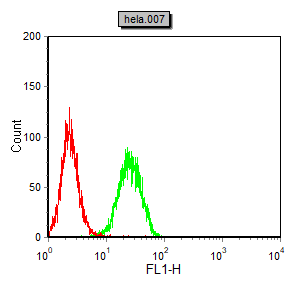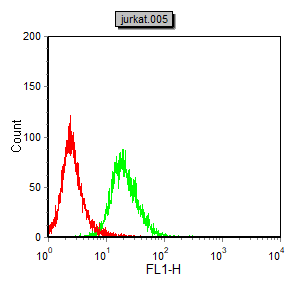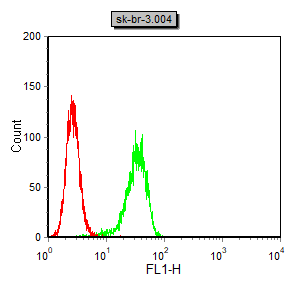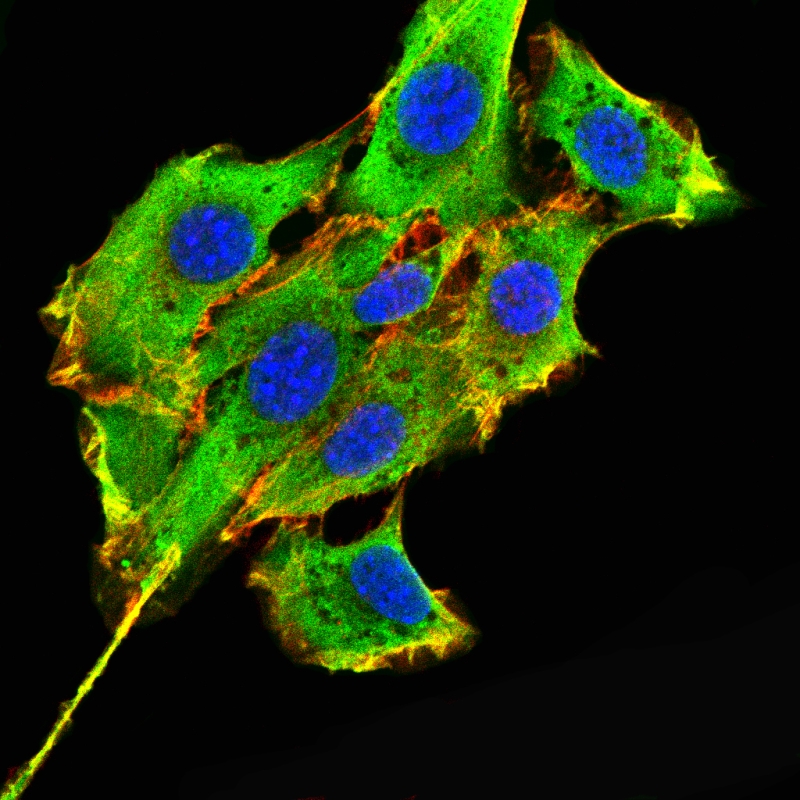




| WB | 咨询技术 | Human,Mouse,Rat |
| IF | 咨询技术 | Human,Mouse,Rat |
| IHC | 咨询技术 | Human,Mouse,Rat |
| ICC | 技术咨询 | Human,Mouse,Rat |
| FCM | 咨询技术 | Human,Mouse,Rat |
| Elisa | 1/500-1/5000 | Human,Mouse,Rat |
| Aliases | Tp44 |
| Entrez GeneID | 940 |
| clone | 3F4A5 |
| WB Predicted band size | 25kDa |
| Host/Isotype | Mouse IgG1 |
| Antibody Type | Primary antibody |
| Storage | Store at 4°C short term. Aliquot and store at -20°C long term. Avoid freeze/thaw cycles. |
| Species Reactivity | Human,Mouse |
| Formulation | Purified antibody in PBS with 0.05% sodium azide |
+ +
以下是关于CEBPD抗体的3篇参考文献示例(文献信息为模拟内容,仅供参考):
1. **"CEBPD regulates inflammatory response in macrophages via NF-κB pathway"**
*作者:Li X, et al. (2020)*
**摘要**:研究利用CEBPD特异性抗体通过Western blot和ChIP实验,揭示CEBPD通过调控NF-κB信号通路增强巨噬细胞炎症因子表达,参与脓毒症病理过程。
2. **"CEBPD promotes tumor metastasis in triple-negative breast cancer"**
*作者:Wang Y, et al. (2018)*
**摘要**:通过免疫组化(使用抗CEBPD抗体)发现CEBPD在三阴性乳腺癌中高表达,其通过激活EMT通路促进肿瘤转移,提示其作为潜在治疗靶点。
3. **"Dynamic expression of CEBPD in neuronal stress responses"**
*作者:Smith J, et al. (2019)*
**摘要**:研究利用小鼠模型和CEBPD抗体进行免疫荧光染色,发现脑缺血后神经元CEBPD表达上调,通过调控凋亡相关基因加重神经损伤,抑制CEBPD可改善预后。
注:以上文献为示例,实际引用时请核实真实来源及详细信息。如需具体文献,建议通过PubMed或Google Scholar搜索关键词“CEBPD antibody”、“CEBPD function”或结合研究领域(如癌症、炎症等)筛选。
The CEBPD (CCAAT/Enhancer-Binding Protein Delta) antibody is a crucial tool for studying the biological functions of the CEBPD protein, a member of the C/EBP family of transcription factors. CEBPD plays diverse roles in cellular processes, including differentiation, inflammation, metabolism, and stress responses. It regulates gene expression by binding to specific DNA sequences and interacts with signaling pathways such as NF-κB and STAT3. making it pivotal in immune regulation and cancer biology. Dysregulation of CEBPD has been implicated in diseases like cancer, neurodegenerative disorders, and metabolic syndromes, highlighting its therapeutic and diagnostic potential.
CEBPD antibodies are widely used in techniques like Western blotting, immunohistochemistry (IHC), immunofluorescence (IF), and chromatin immunoprecipitation (ChIP) to detect protein expression, localization, and DNA-binding activity. These antibodies aid in exploring CEBPD's role in tumor progression (e.g., promoting epithelial-mesenchymal transition in cancers) or its anti-inflammatory effects in chronic conditions. Researchers rely on validated CEBPD antibodies with high specificity, often confirmed by knockout controls or siRNA knockdown, to ensure experimental accuracy. Host species (e.g., rabbit, mouse) and clonality (monoclonal vs. polyclonal) vary depending on application needs. As interest in CEBPD's dual roles in pro- and anti-tumorigenic contexts grows, reliable antibodies remain essential for unraveling its complex mechanisms in health and disease.
×